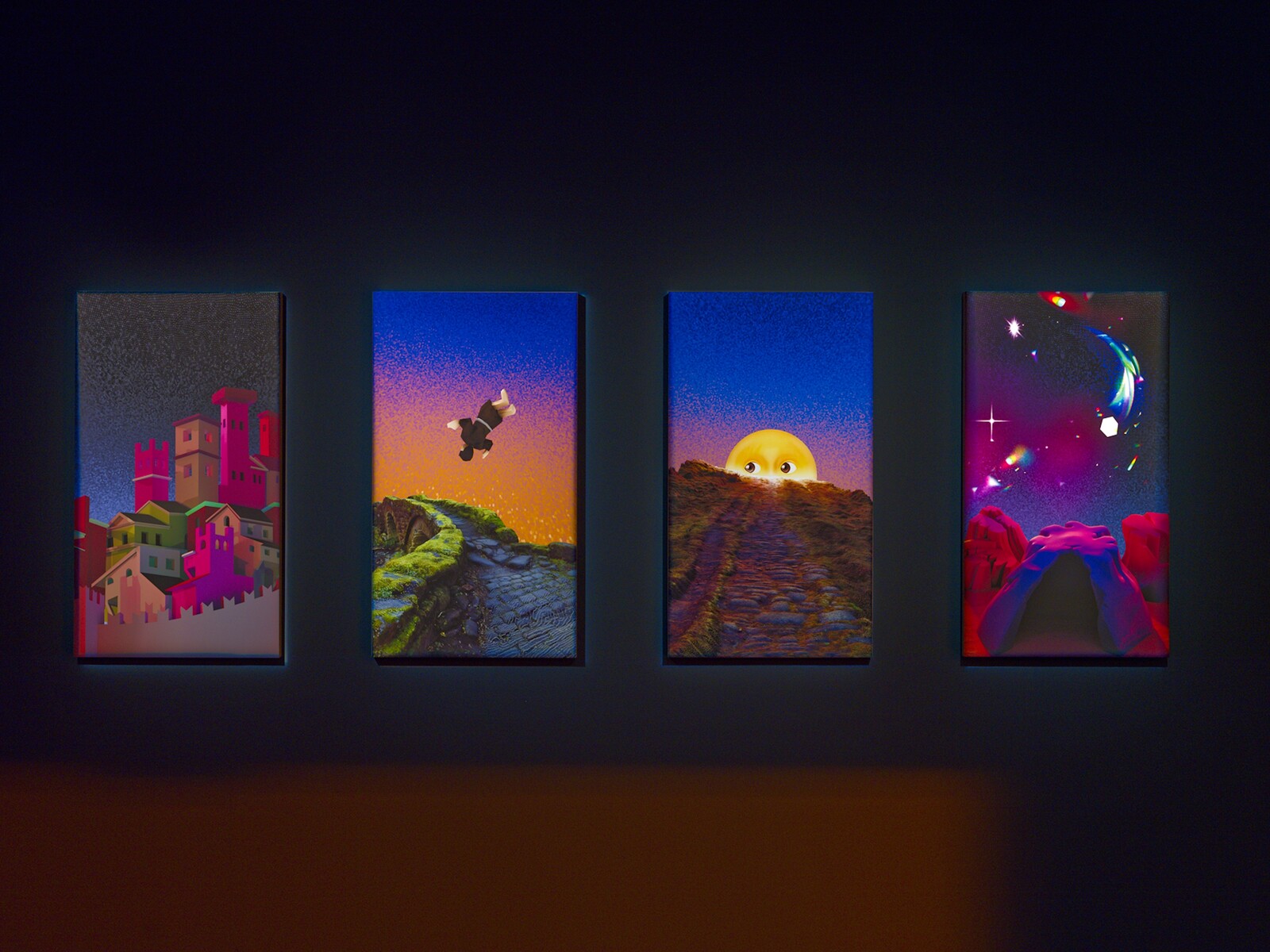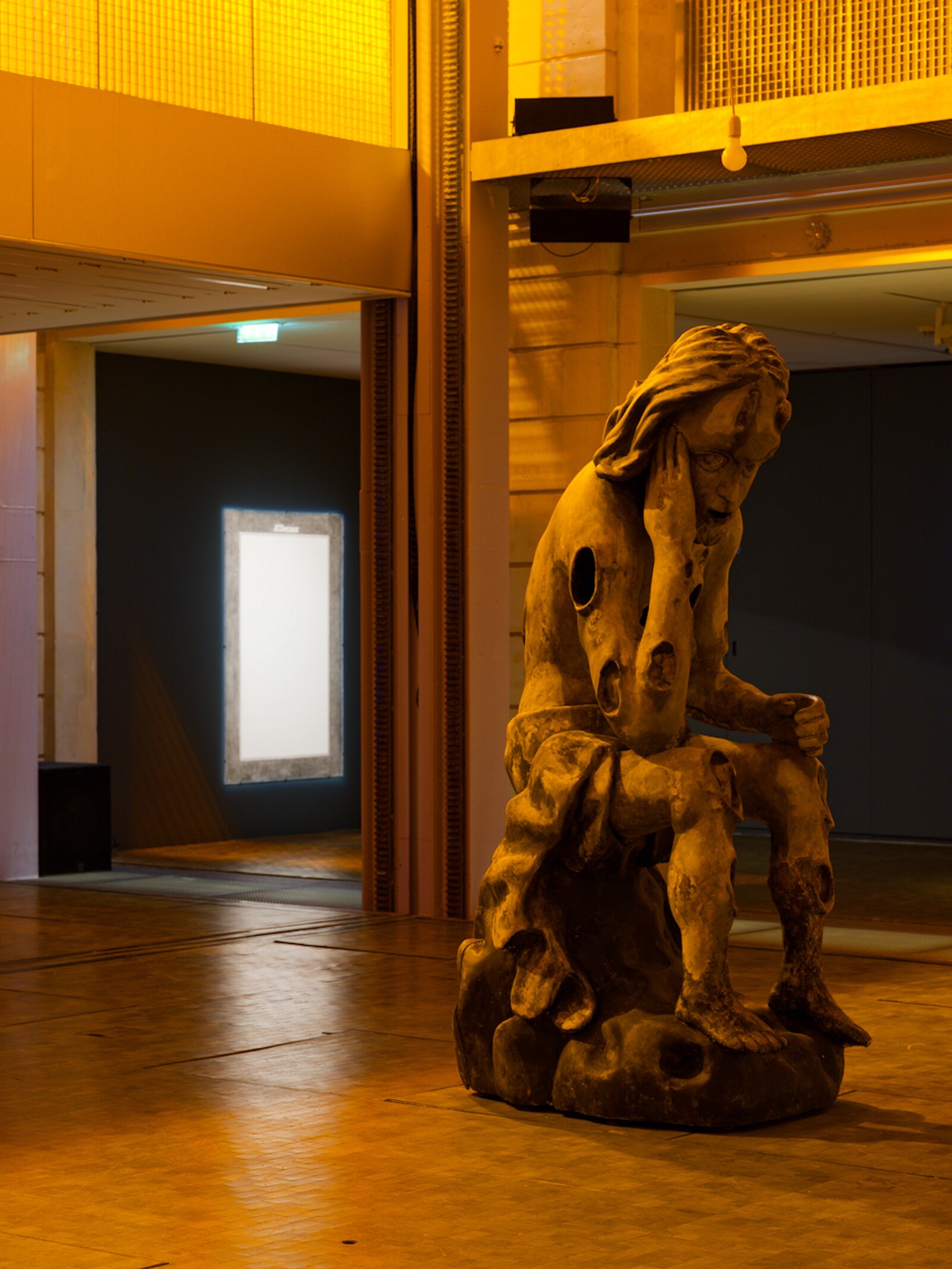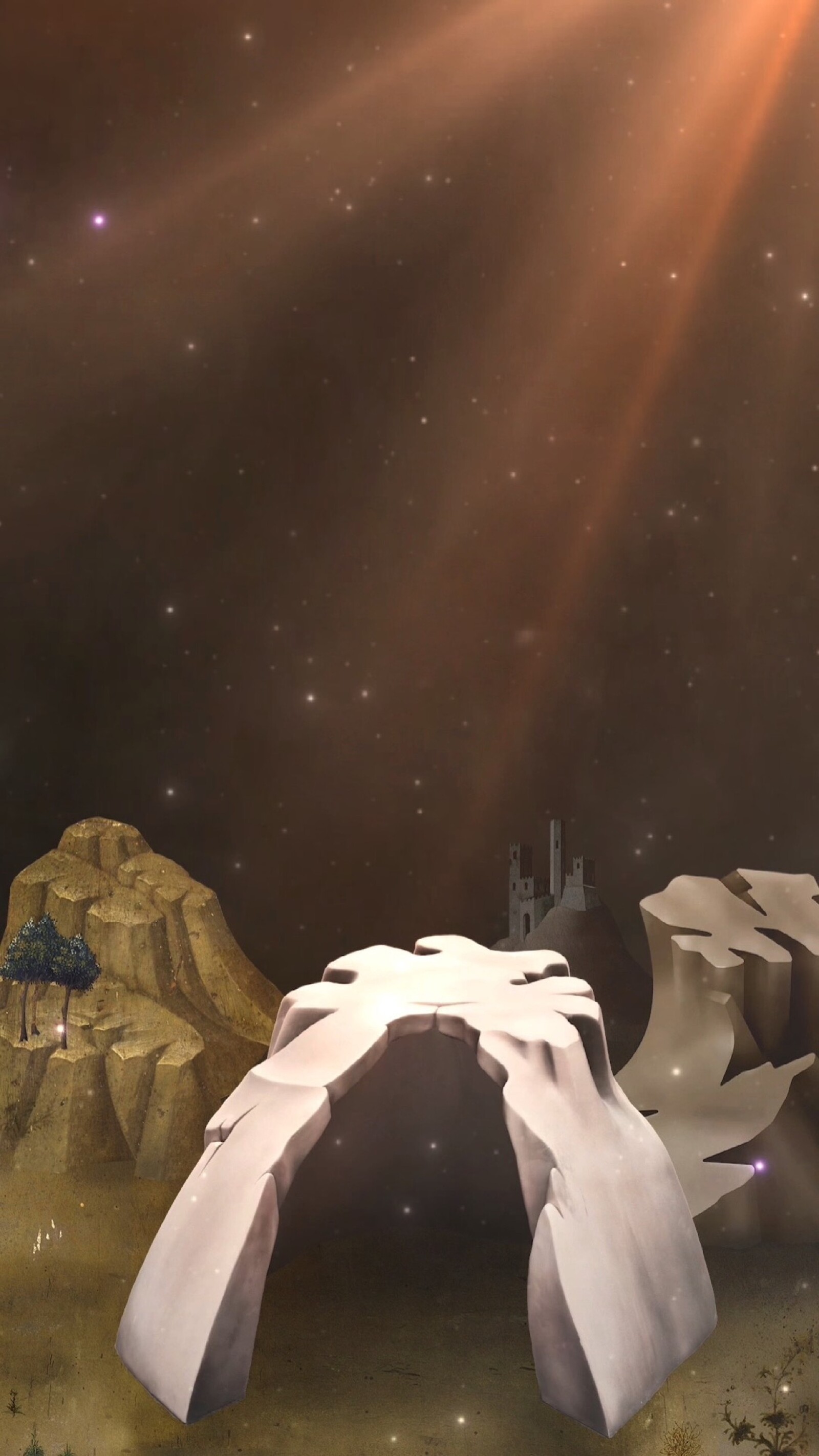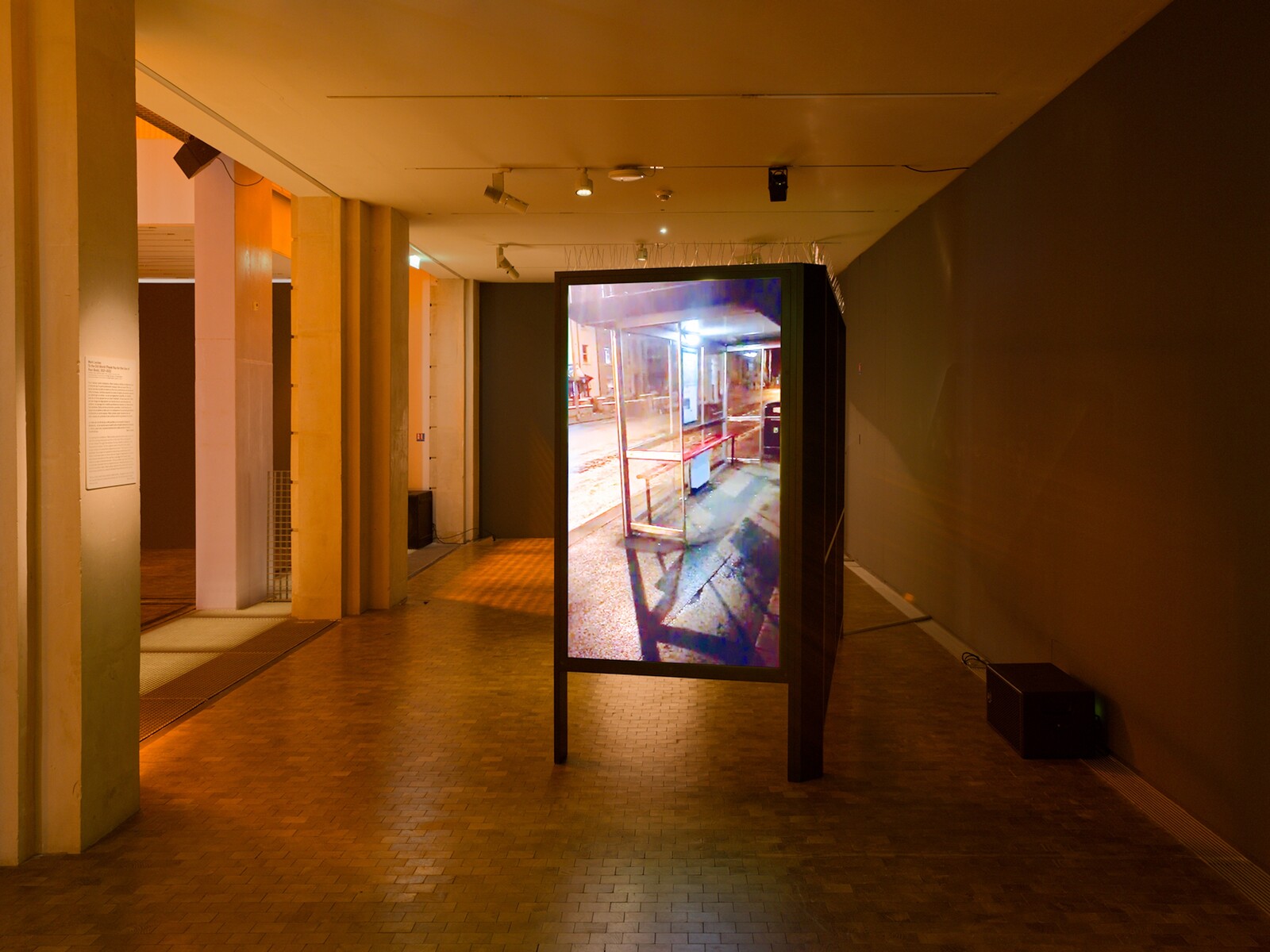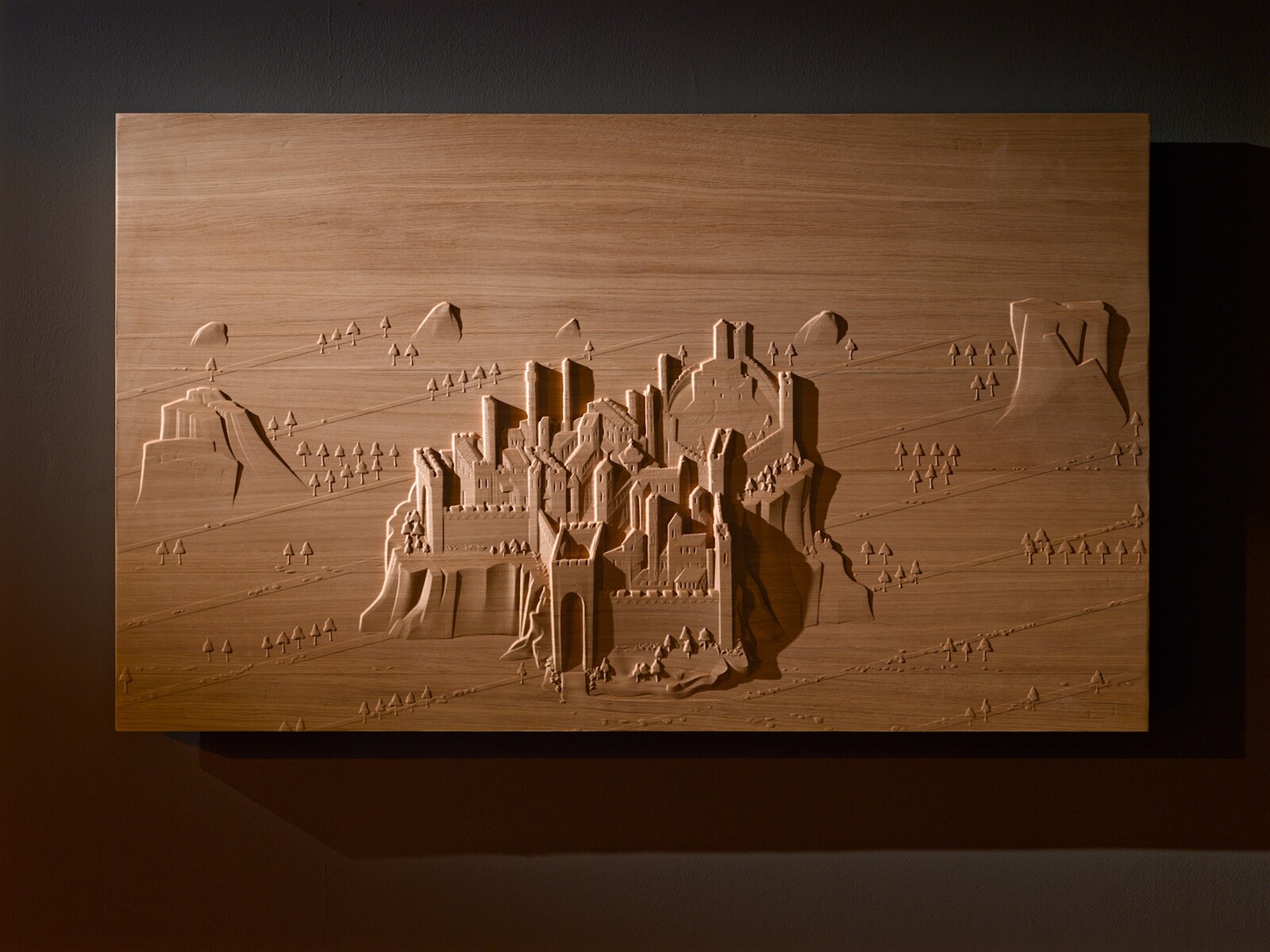On my way into Lafayette, I encountered a quote by Mark Leckey on the wall near the entrance that had an echo of a content warning: “The works in the exhibition evoke intense emotions that make you unstable, untethered, that remove you from your normal place of function and towards something groundless, without horizon or a z-axis.” Okay, I thought. Also: how can a show actually live up to that kind of claim? Thirty minutes later, and I was experiencing a lurching, wheeling sensation and an elevated heart rate. I felt psychically and metabolically moved, but towards what?
Leckey has a remarkable gift for locating ecstatic feeling inherent to the experience of specific media, and amplifying this into something that can be shared: finding a way to transcendence through a symbolic system of brands, signs, and sounds (Fiorucci Made Me Hardcore, 1999); an erotic desire to enter a world of images (Parade, 2003); the rush of imagining oneself dispersed across the spacetime of the internet (The Long Tail, 2008–9). In “As Above So Below” there are further varieties of euphoric experience, yet here, significantly, they are drawn into a parallel with medieval depictions of divine experience: the sublime and wonderful terror of God. Through sculpture, image and, perhaps most importantly, through sonic explorations of soaring, plummeting, whirling, and fragmenting, Leckey has created an arena that aims to recreate an experience of being overcome.
In Lafayette’s central atrium and mezzanine spaces, there is the atmosphere of a dimly lit chapel, one in which icons quietly glimmer before, one after the other, they come to flashing, polyphonic life. At the center of the space is Nobodaddy (2018), a large sculptural figure with gaping ulcers covering his body, who sits with his sorrowful head in his hand.1 Speakers have been installed inside the figure’s lesions, allowing him to act as the MC for the show’s program, sound seeping from his wounds as he announces the title of works before they are activated in the “cloister” areas of the space.2 These include To the Old World (Thank You for the Use of your Body) (2021–22), a replica London bus shelter with a flatscreen monitor where an advertising poster might be. Playing on it is grainy smartphone footage of a young man throwing himself through the glass window panel of a similar bus shelter, presumably for the lolz, which was originally posted on Instagram.
Restaging the event with an actor, Leckey’s video slows and extends the moment the body breaks through the glass to create a profound and sensuous vision of a shattered self, as the protagonist’s face is reflected into a million breaking shards. The cries of his friends and passersby (“O my Jesus Christ!/O my God you did it!”) are splintered into an auto-tuned chorus of voices, accompanied by bleeps and twinkles, that begins to sound hymnal, our everyday expressions of shock revealing their roots in a religious language that calls to the divine. It is a transcendent work in a literal sense, a view of a strange act of idiotic self-harm that calls upon a history of self-flagellation and pain as an entry point to the holy, raising the profane to the sacred. Elsewhere, Leckey has retooled a series of advertising posters from an omnipresent UK road safety campaign featuring a close up on a single eye—the petrified look of a pedestrian seen right before your car slams into them (slogan: “THINK!”). Their hard-hitting textual warnings have been replaced with lines such as “Everywhere eyeballs are aflame” from Gustave Flaubert’s The Temptation of Saint Anthony (1874).
The sound and activity of the exhibition rotates around the perimeter of the room as the various videos are activated in turn, creating the sense of a whirling carousel. Through a squint (a small opening, traditionally in a church wall) we explore a CGI city under a sky woven with stars, based on the painting Una città sul mare by Sassetta (1423–26), a landscape which begins to revolve around on an axis as organ music crescendos (Mercy I Cry City, 2024). Elsewhere a pair of novelty toy unicorns become awestruck by a rundown seaside fairground exalted with multicolored lights that dazzle their glittery eyes (“everywhere eyeballs are aflame”), causing their entire world to spin like a Waltzer (DAZZLEDARK, 2023).
There is much more. I was most affected by Carry Me Into the Wilderness (2022), an installation referring to a walk Leckey took in London’s Alexandra Park after a period of pandemic lockdown, in which he was moved to record his own voice on a phone, grasping for language to describe a sense of revelation at the beauty of the world itself. “I just walk out into this and I just well up I just fill up … I can’t I can’t bear it.” This same vocal clip is heard as we move through a three-dimensional landscape based on the painting Saint Jerome in the Wilderness by Lorenzo Monaco (ca. 1398–1400) which features a cave and a pure gold leaf sky. “I can’t bear it,” says the voice, drowning in a gold heaven. The cumulative intensity of the show started to possess me with its loud chorus of “Os,” each one reaching at the ineffable. Transported back to my own thoughts about divine splendor during lockdown walks in New York’s Prospect Park, I felt that I was nearing some kind of truth, witnessing something ancient that was being resuscitated in the galleries.
Peter Schjeldahl once wrote about a formative experience seeing Piero della Francesca’s Madonna del Parto (ca. 1455–65), steadied and elevated by the artist’s ability to render weight, and struck by the “held-breath tenderness and its air of sharing a deeply felt, urgent mystery.” In another age, he continues “the experience might have made me consider entering a monastery. Instead, I became an art critic.”3 It is the same type of transmuted force, drawn from a medieval depiction of grace, that is imparted in Leckey’s exhibition, albeit one that is inspired less by gravity and more by sensations of its absence. But it taps into something rare and powerful, a quality of experience that demands to be transformed it into something tangible, shared.
The sculpture is a scaled-up version of a small figurine in London’s Wellcome Collection thought to depict Job.
Philippe Parreno, who was early to develop a genre of exhibition-making in which time-based media events move an audience around a show, uses the term “scripted space,” appropriate to this show.
Peter Schjeldahl, “Heaven on Earth,” the New Yorker (February 24, 2013), https://www.newyorker.com/magazine/2013/03/04/heaven-on-earth-4.

